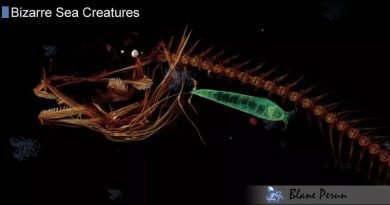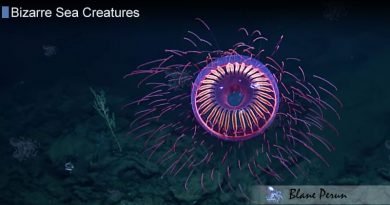Cuvier’s Beaked Whale
Table of Contents
The Cuvier’s beaked whale, also known as the goose-beaked whale or Ziphius cavirostris in Latin, is the most widely distributed beak whale on Earth, equally found in the Mediterranean, in the North Atlantic and the North Pacific, around South Africa and New Zealand. Cuvier’s is also the most frequently seen whale species, even though its preferred habitat is deep down, at around 1,000 meters.
Named after the scientist who first described it in the 19th century, French anatomist Georges Cuvier, this widespread whale species grows quite large, its robust, strong, cigar-shaped body reaching 5-7 m in length and with many specimens weighing around two and a half tons. Though it is a beaked whale, the beak is much smaller than in other beaked species. The small beak has a somewhat upturned jawline, creating the illusion that the animal is smiling all the time.
The Cuvier’s beaked whale is a hunter, its diet consisting mainly of small fish and squids.
Whales regularly dive, then they resurface to inhale and to exhale. The time they usually spend submerged in the water is usually not very long, but the Cuvier’s beaked whale is an exception: in 2011, a Cuvier’s whale tagged by scientists for tracking dove to the depth of almost 3,000 meters and spent there two hours and 17 minutes before returning to the surface again. The dive is considered to be longest and deepest one ever recorded since mammals started to be observed.
Unveiling the Mysteries of Cuvier’s Beaked Whale
Cuvier’s Beaked Whale, a marvel of the marine world, remains one of the most enigmatic and less understood cetaceans. Named after the renowned French naturalist Georges Cuvier, this species, scientifically known as Ziphius cavirostris, boasts a distinctive robust body, a prominent forehead, and a short beak. Despite their widespread distribution across the world’s oceans, their elusive nature, deep-sea habitat, and infrequent surface appearances make them a rare sight, sparking curiosity and fascination among marine biologists and enthusiasts alike.
Habitat and Distribution: Navigating the Depths
Global Presence
Cuvier’s Beaked Whale thrives in a variety of marine environments, from tropical and temperate waters to the cooler regions of the deep ocean. These whales have a remarkable ability to adapt to different oceanic conditions, which explains their widespread distribution. They are often found in deep waters along continental shelves and in submarine canyons, which serve as rich feeding grounds for their preferred prey.
Deep-Dive Specialists
What truly sets the Cuvier’s Beaked Whale apart is its astounding deep-diving capability. Holding the record for the deepest and longest dives among mammals, these whales can plunge to depths exceeding 2,000 meters and remain submerged for over two hours. This extraordinary adaptation allows them to hunt squid and deep-sea fish, navigating the pitch-black waters of the ocean’s abyss with echolocation.
Anatomy and Physiology: Understanding the Unique Build
Distinctive Physical Features
The physical appearance of Cuvier’s Beaked Whale is marked by a unique combination of characteristics. They possess a stout, torpedo-shaped body with a flat, sloping forehead and a small, but distinct beak. The males are particularly noted for their two visible teeth at the tip of their lower jaw, which are used in intra-species combat, leaving distinctive scars that serve as a testament to their battles.
Adaptations for the Deep
The physiological adaptations of Cuvier’s Beaked Whales are nothing short of extraordinary. Their bodies are equipped to withstand the extreme pressure of deep-sea dives. This includes a flexible ribcage that collapses under pressure and a unique oxygen management system that maximizes efficiency during dives. Moreover, their blood and muscles have a high affinity for oxygen, allowing them to store large amounts for their lengthy underwater expeditions.
Behavior and Social Structure: Delving into Their Social Lives
Elusive Social Whales
Despite their solitary nature, Cuvier’s Beaked Whales occasionally form small, tight-knit groups, usually consisting of two to seven individuals. These groups are thought to be family units or close-knit social circles, highlighting a complex social structure that remains largely a mystery. Their social interactions and communication methods, particularly their use of echolocation clicks for navigation and feeding, underscore a sophisticated level of social behavior.
Vocalizations and Communication
The acoustic behavior of Cuvier’s Beaked Whales is a critical aspect of their survival in the deep sea. They produce a series of clicks and buzzes, which are essential for echolocation, allowing them to detect prey in the complete darkness of their deep-sea habitat. These sounds not only facilitate hunting but also play a crucial role in communication between individuals, aiding in the cohesion of their social groups amidst the vastness of the ocean.
In wrapping up, Cuvier’s Beaked Whale remains an emblem of the ocean’s vast unexplored mysteries. Their incredible deep-diving abilities, unique physical characteristics, and complex social structures offer a glimpse into the adaptability and resilience of marine life. As research continues to unveil more about these remarkable creatures, our understanding and appreciation of their role in the ocean’s ecosystem will undoubtedly deepen.
FAQs about Cuvier’s Beaked Whale
1. How deep can a Cuvier’s Beaked Whale dive?
Cuvier’s Beaked Whale holds the record for the deepest dive by a mammal, reaching depths of over 2,000 meters (about 6,560 feet). These dives can last for more than two hours, showcasing their incredible adaptation to deep-sea life.
2. What does a Cuvier’s Beaked Whale eat?
Their diet primarily consists of deep-sea squid, fish, and sometimes crustaceans. They use their advanced echolocation capabilities to hunt in the pitch-black depths of the ocean.
3. How can you identify a Cuvier’s Beaked Whale?
They are characterized by their robust, torpedo-shaped bodies, flat sloping foreheads, and short beaks. Males are distinctive due to the presence of two large teeth at the tip of their lower jaw, which are often used in intra-species combat.




